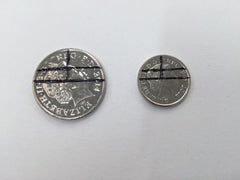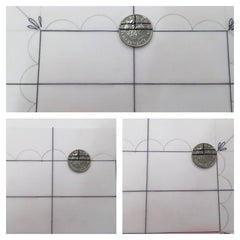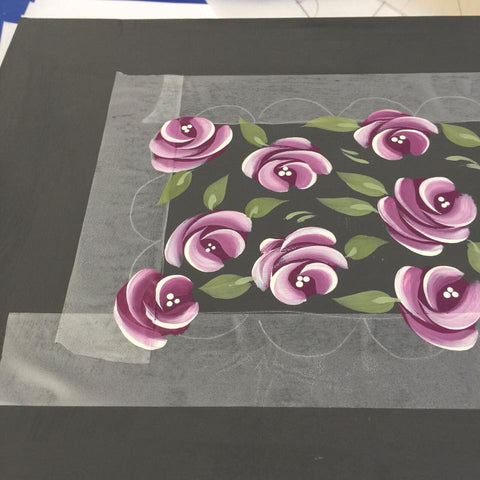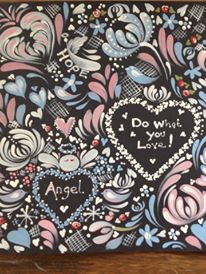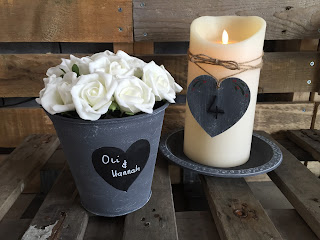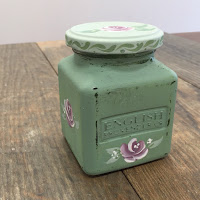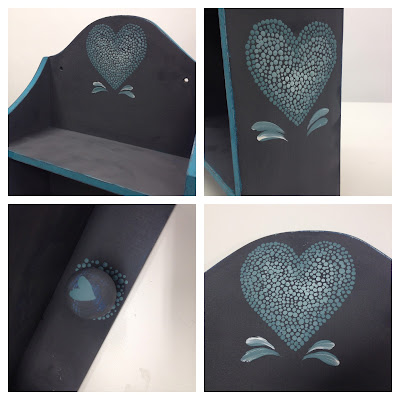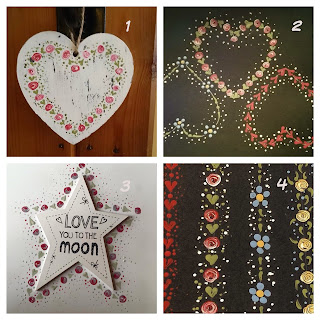Even though I've been painting for 20 years, I know that in my life time I won't learn everything there is to know about Folk Art & Decorative Painting.
The ethos of You Can Folk It! is that in each series we will teach you a different set of skills and once you've completed lessons from each series (there will be 3 in total) you will have a the basic foundation of most skills. This is because just like cooking a recipe, most designs use a little bit of this and a little bit of that.
Here I will be showing you how to paint this Poinsettia using skills that you've learnt in both Series No. 1 and Series No. 2.
Step 1: To start with, print the pattern and start by transferring the leaves and petals marked 1 & 2.
Step 2: Paint the leaves marked 1 using Avocado (from our series 2 paint palette) and the round brush.
Using comma strokes, paint from the inside to the tip. (Note use your liner brush for the tip of the leaves if you are struggling to get a fine point).
Once these are dry, use the white transfer to transfer petals marked 2 over the top of your design.
Step 3: To paint the petals, because red is a transparent colour (any colour that does not have white added tends to be transparent) we need to paint the petals white first.
Step 4: Once the white has dried, add a touch of soft black (part of our Series 2 paint palette) to tomato red and paint the petals again.
Step 5: Again, once this layer has dried, transfer the petals labelled 3 and repeat these steps with just tomato red.
Step 6: To paint the centre, add soft black to the tomato red until it is slightly darker than your first layer of petals. Fill the middle using your round brush.
Step 7: We now need to 'shade' any areas that are behind something else in order to create dimension. As this petal is behind one in front we are going to 'float' soft black to create the shade (I teach you how to use this technique on the DVD's contained in our Series No. 2 Babushka and Cupcake kit)
Here I've used the transfer paper to re-transfer the lines so I know which petals are in front of the others. You can see where I have floated the soft black to create the shade.
Step 8: Now, to create more depth, we need to highlight the petals that are at the front. I have floated a lighter colour (DecoArt's Americana Cadmium Orange) on the edges of the petals. I have also floated some colour on the very tips of the petals that are behind.
TIP: One of the most common mistakes to make when creating a highlight using floated colour is to use colours that contain a lot of white. Doing this only works if the colour you are highlighting contains white also. When highlighting tomato red, we do not have a lighter colour in the series 1 & 2 colours that does not contain white which is why orange was used.
(NOTE: We stock a wide range of DecoArt Americana colours and you can purchase the DecoArt Matte medium and flat brushes separately if you didn't want to invest in a full Flat Brush Starter kit.)
Step 9: Next, I used the large end of the dotting tool and yellow ochre (from our Series 1 Starter kit) to dot in some large and small dots in the centre. Once dry I placed a smaller soft black dot in the centre of the larger dots.

Step 10: Once I'd put the dots on, I felt it needed a bit more 'pow' on the highlights - so I side loaded the round brush with Cadmium orange (as taught in the Series 1 Vintage Rose lesson) and applied it along the edge of the top petals. I then used a toothbrush & soft black to splatter the finished design before adding to the greeting card.
Once you've practiced your poinsettia, try painting it into a mount board square. If you are pleased with the result, you can add it to a greetings card, attach it to a gift bag or note book or use it as a gift tag and you have a little something that will mean just a little more than something you bought from the shop.
Happy Folking,
Carol xx
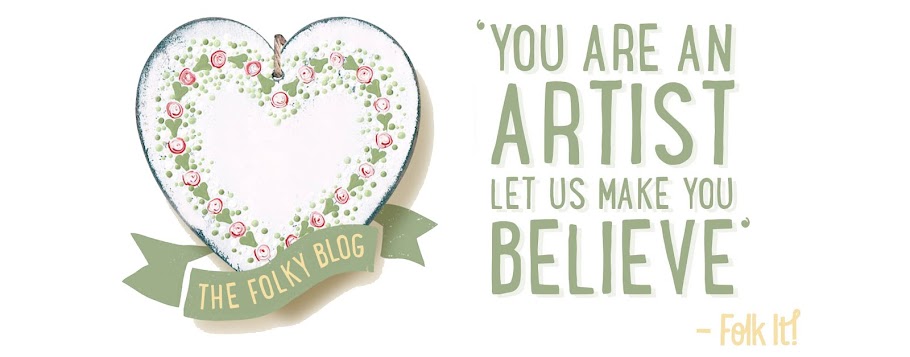












 Step 1: on your tracing paper, draw out the rectangle/square you wish to edge in a size you need. Then mark it into quarters.
Step 1: on your tracing paper, draw out the rectangle/square you wish to edge in a size you need. Then mark it into quarters.